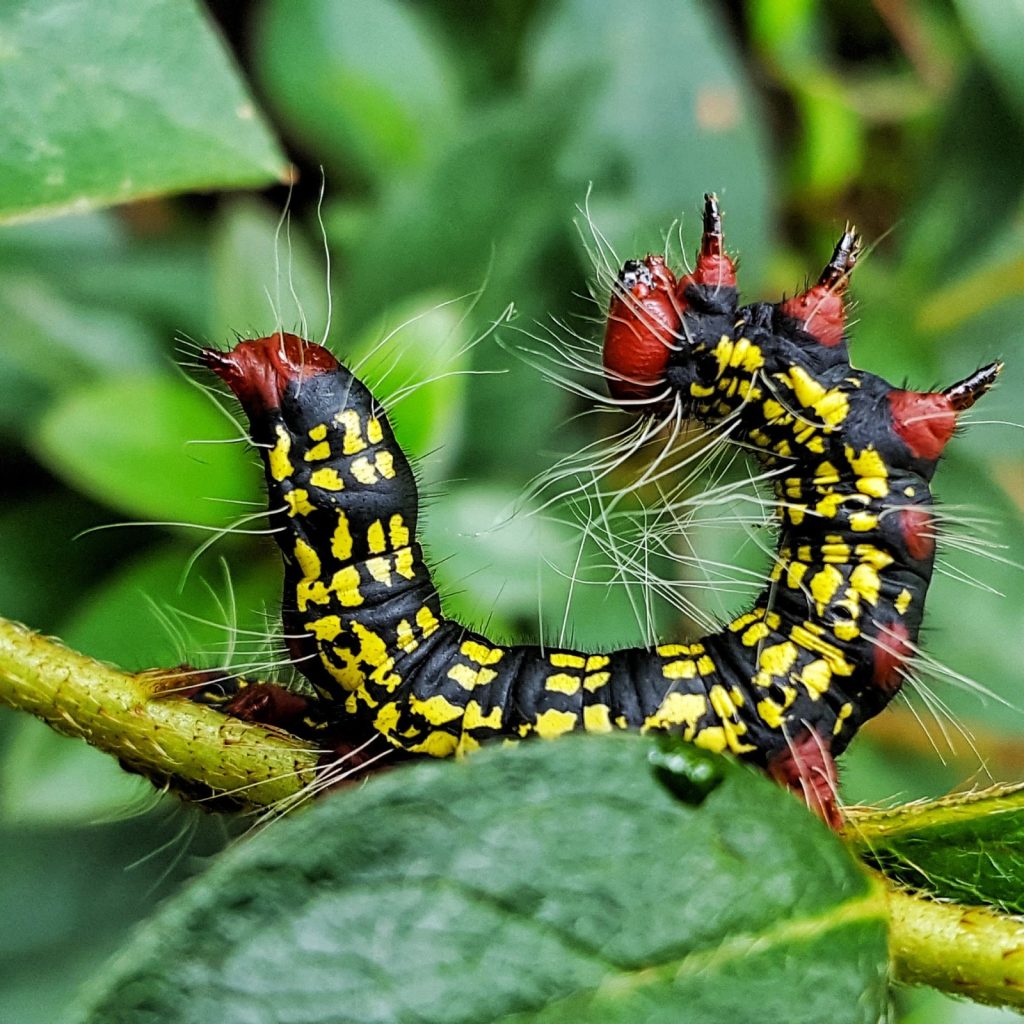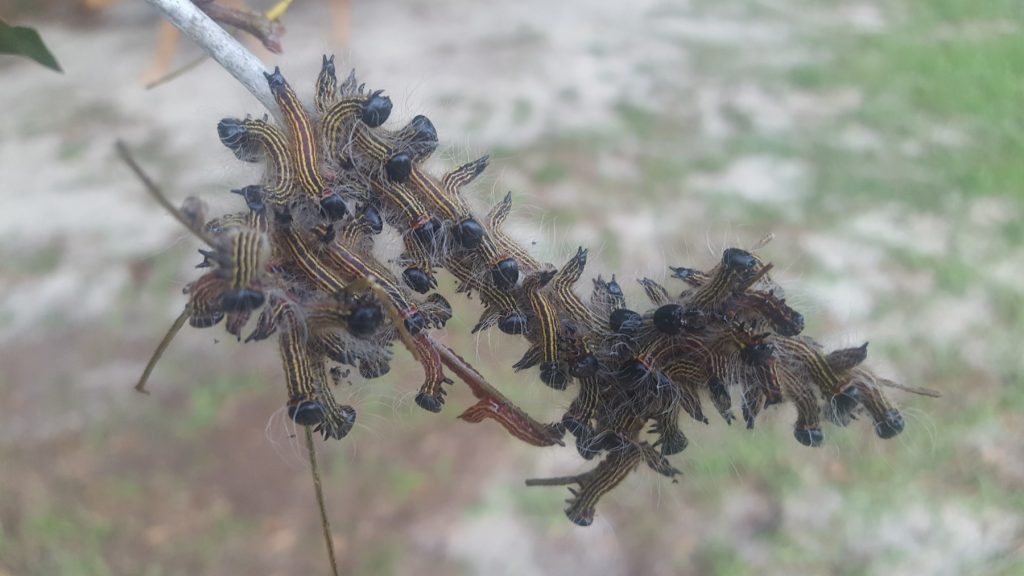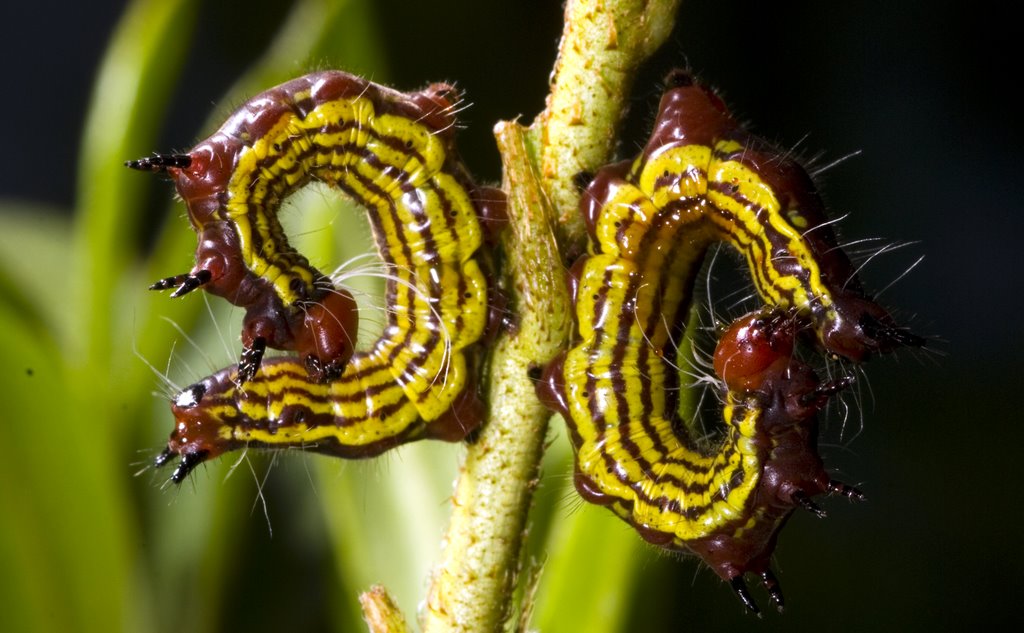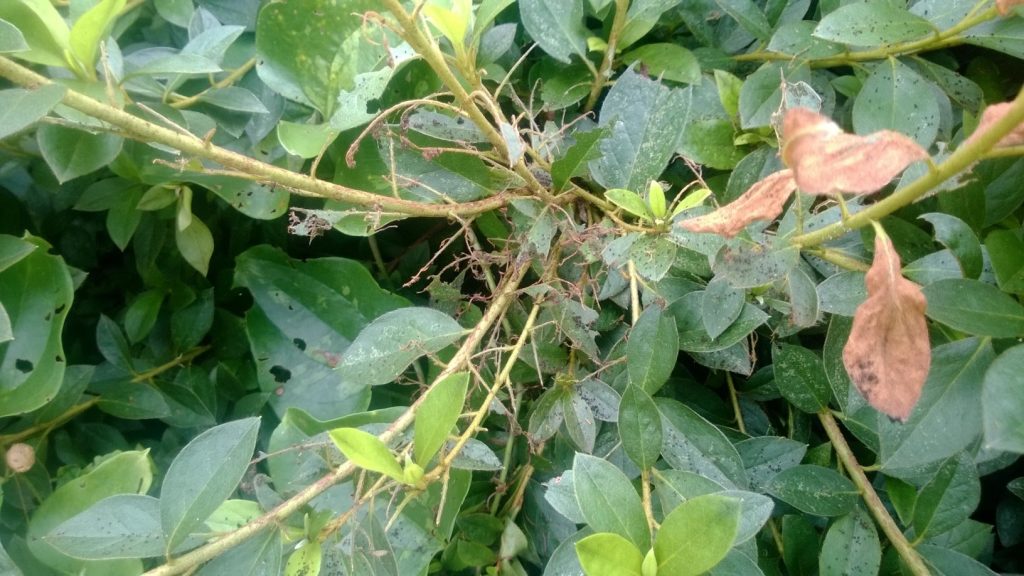

Introduction: As the warm breeze of late summer fills the air in Southeast Georgia, natural phenomenon graces the region – the appearance of two species of Datana caterpillars. Meet Datana ministra (yellow neck caterpillar) and Datana major (red headed azalea caterpillar), two caterpillars that show up this time of year every year. As the name suggests, the red headed azalea caterpillar is found primarily on azaleas. The yellow neck caterpillar is found primarily oak species.
Datana ministra – The Yellow-necked Caterpillar
The Yellow-necked Caterpillar (Datana ministra) is an eye-catching species that emerges during the late summer months in SE Georgia. With its vibrant appearance and interesting behaviors, it leaves a lasting impression on nature enthusiasts and ecologists alike.


Appearance: As the common name suggests, this caterpillar has a bold yellow band on it’s “neck” and long thin hairs. Sporting a sleek black body adorned with striking yellow stripes along its sides, the Yellow-necked Caterpillar is visually stunning.
Habitat and Behavior: The Yellow-necked Caterpillar is gregarious, often forming large groups on the branches of deciduous trees such as oak, hickory, and maple. The caterpillars are found in large groups. They often display a synchronized defense behavior. When disturbed they will form a c-shaped posture. All of the individuals in cluster do this at the same time.
Despite their voracious appetites for leaves, these caterpillars are also part of the intricate web of nature’s balance, as they serve as a valuable food source for various predators and parasites in the ecosystem.
Life Cycle: As with all moths and butterflies, they have a complete life cycle with egg, 5 larval caterpillar stages called instars, pupa, and adult (moth).
After completing their feeding stage, the Yellow-necked Caterpillars undergo pupation, transforming into moths with intricate patterns and beautiful shades of brown and gray. These moths continue the species’ life cycle by laying eggs, starting the process anew.
Datana major – The Azalea Caterpillar
The other Datana species that appears in late summer in SE Georgia is Datana major, commonly known as the Azalea Caterpillar (Datana major). This caterpillar species has a very similar life cycle and behaviors to the yellow necked caterpillar, but is a different species that appears on different host plants.
Appearance: The Azalea Caterpillar showcases a striking appearance with a body covered in shades of yellow, red and black. These colors blend harmoniously, creating an exquisite display of nature’s artistry. Earlier instars are primarily yellow and red. Later instars show black, red and white.
Habitat and Behavior: The Azalea Caterpillar prefers azalea shrubs, though there are some reports of it occurring on other plants like blueberries. Like its Yellow-necked counterpart, this caterpillar also congregates in groups, but it rarely causes significant damage to its host plants.



Credit: Dr. Tim Davis, Director CGBG
Life Cycle: After their feeding stage concludes, the Azalea Caterpillars undergo pupation, eventually emerging as moths with patterns and earthy tones. These moths also play vital roles in the ecosystem, contributing to the pollination process and serving as prey for other creatures.
As we witness the transformation of these caterpillars into moths, take a moment to appreciate the wonders of nature and its interconnectedness. Preserving the habitats of these remarkable creatures is crucial to ensure the continued existence of these marvelous Datana caterpillars in Southeast Georgia for generations to come. As we discussed in an earlier blog (https://coastalbg.uga.edu/2023/07/doug-tallamys-impact-caterpillars-and-bird-diversity/), caterpillars like these play a very important role in the bird population biodiversity.

Pest Management: Managing Datana caterpillars in Southeast Georgia may not be necessary. They eat some leaves, but this does not cause serious damage to the host plants. The flowers for next spring are safe. If you feel you must control these caterpillars, scouting for them early and finding the small caterpillars will help. Since the caterpillars are gregarious, it is easy to remove them by hand into a bucket of soapy water. Remember while they do cause some temporary damage, they are an important source of food for many of our bird species.
Conclusion: Late summer in SE Georgia brings a captivating natural spectacle in the form of Datana ministra and Datana major caterpillars. These two species, the Yellow-necked Caterpillar and the Azalea Caterpillar, showcase nature’s exquisite beauty and complexity. While they might be intriguing to observe, they also hold essential positions within their local ecosystems.
For more information:
https://content.ces.ncsu.edu/azalea-caterpillar
https://entnemdept.ufl.edu/creatures/orn/azalea_caterpillar.htm